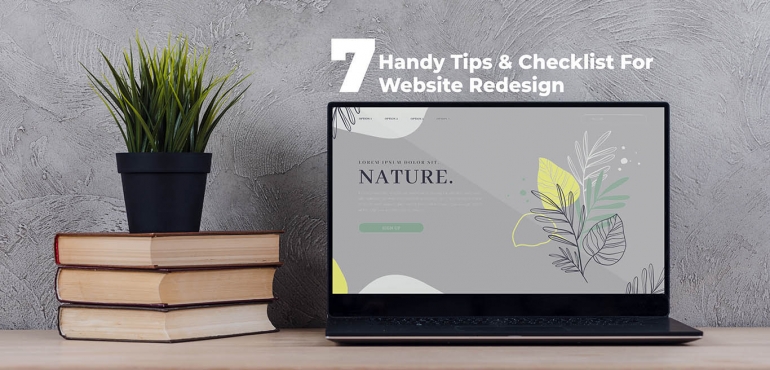7 Handy Tips & Checklist For Website Redesign
Web Redesign is an art by itself and requires much expertise. It is important to follow certain guidelines in order to ensure that the web designers are well versed.
How and where to start while redesigning a website?
Our website redesign planning guide will help one to determine exactly what one requires in a website.
1. Clarify what’s wrong with the current site
It is better to prepare a checklist of everything that one finds wrong with the current website.
This list should rather include everything from verbiage to design and everything in between. This will change the website aesthetics, and can also help uncover other problems with the website that could affect its performance.
Once the list is created then circle all the issues that are strictly design related. The rest of the issues, need to be saved for the next website update initiative.
2. Decide how one is going to fix the website’s aesthetic issues
Once the aesthetic design are identified it is better to fix them up. But before one gets started, it is important to have a game plan.
Take the list of circled items that are there on the first list and rewrite the elements that needs to be implemented instead of the current ones. Then go in for brainstorm some aesthetic
Prepare a list of aesthetic complaints that the color of the text does not stand out against the background and then write a suggestion of how you one might want to fix it.
In case the navigation bar is too chunky and has too many components. One can make a simple suggestion such as a “streamline navigation bar.”
Decide as to how one has to fix the website’s issues and thus create a list of action items to complete.
3. Hire a reputable website redesign agency
In case of experience with web design, there is no problem with completing the website redesign the checklist on one’s own, however, if one is new to the world of web design, it is better to leave to the professionals.
Not only can they create a stellar website for one’s company, but they can work towards making one’s dreams come true. It can be done in far less time and save precious time along the way.
It is better to chat with the clients on the phone before signing any contracts and get a custom quote as well.
4. Communicate the goals, one’s brand, and one’s taste to one’s designer
In order to have a chosen website, it is important to properly communicate what one is looking for in a website.
Sit down and chat with the website designer about the two lists that have been prepared and let them know how one would prefer to change up the website to better fit the style.
The web designer will prefer an open-minded approach.
One can share with style guides with them so that they can implement the existing color scheme, fonts, and styles.
5. Give the designer feedback on the design
The website designer will begin by creating a wireframe, or a watered-down version of the website. This is the time to open with them about what is preferred and what is not with regard to the design.
After the required feedback and changes made by them then the launch.
6. Perform user testing
After users have had a chance to use the website, it is indeed time to do some user testing. This can help one to understand how users do behave on one’s website so that it is possible to further determine what customers think about the website.
7. Implement miscellaneous, non-aesthetic changes
It is necessary to also act upon issues that are not purely aesthetic.







